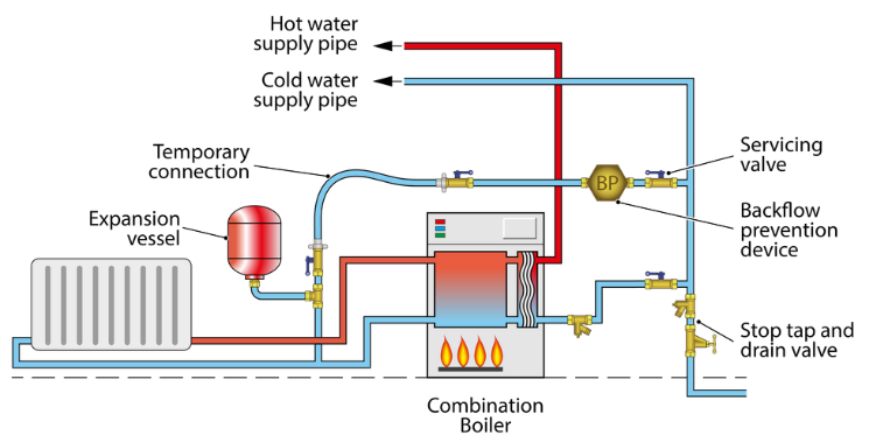
If a premises has any form of mains water supply, then the water fittings regulations in England, Wales and Northern Ireland, byelaws in Scotland, apply.
These legal requirements play an important role in protecting public health and safeguarding water supplies. Their purpose includes preventing the contamination and waste of water supplied by a water undertaker once it has entered a customer’s plumbing system.
Typically, hot water systems are classes as vented or unvented and incorporate a range of safety features. Consideration should also be given to Building Regulations requirements.
Regulation 3 England & Wales
Regulation 3 Northern Ireland
Byelaw 3 Scotland
Regulation 4 England & Wales
Regulation 4 Northern Ireland
Byelaw 4 Scotland
Regulation 5 England & Wales
Regulation 5 Northern Ireland
Byelaw 5 Scotland
Schedule 2 paragraph 1
Schedule 2 paragraph 2
Schedule 2 paragraph 3
Schedule 2 paragraph 4
Schedule 2 paragraph 5
Schedule 2 paragraph 6
Schedule 2 paragraph 7
Schedule 2 paragraph 8
Schedule 2 paragraph 9
Schedule 2 paragraph 11
Schedule 2 paragraph 15
Schedule 2 paragraph 17
Schedule 2 paragraph 18
Schedule 2 paragraph 19
Schedule 2 paragraph 20
Schedule 2 paragraph 21
Schedule 2 paragraph 22
Schedule 2 paragraph 23
Schedule 2 paragraph 24
Regulation 5 England & Wales
Regulation 5 Northern Ireland
Byelaw 5 Scotland
Schedule 2 paragraph 2
Schedule 2 paragraph 3
Schedule 2 paragraph 4
Schedule 2 paragraph 7
Schedule 2 paragraph 8
Schedule 2 paragraph 11
Schedule 2 paragraph 15
Schedule 2 paragraph 17
Schedule 2 paragraph 18
Schedule 2 paragraph 20
Schedule 2 paragraph 23
Multifunctional taps
Pipe identification information note
Plumbing maintenance: at home
Plumbing maintenance: commercial premises
Full list
We use cookies to give you the best possible experience with Water Regs UK. Some are essential to provide website functions and ensure the website is secure. We also use cookies to help us understand how people use the site and to make improvements. Click "Accept All" to enable recommended settings or click "Manage cookies" to adjust your settings. For more details, see our Cookie Policy.